| Mission type | Communications |
|---|---|
| Operator | ASU |
| COSPAR ID | 2000-004E |
| SATCAT no. | 26065 |
| Website | nasa |
| Spacecraft properties | |
| Launch mass | 5 kg (11 lb) |
| Start of mission | |
| Launch date | 27 January 2000, 03:03 UTC |
| Rocket | Minotaur-I |
| Launch site | Vandenberg CLF |
| End of mission | |
| Last contact | 28 January 2000 |
| Orbital parameters | |
| Reference system | Geocentric |
| Regime | Low Earth |
| Eccentricity | 0.0 [1] |
| Altitude | 773 kilometres (480 mi) [1] |
| Inclination | 100.2° [1] |
| Period | 100.4 minutes [1] |
| Epoch | 27 January 2000 [1] |
ASUSat (Arizona State University Satellite, also known as ASU-OSCAR 37) was a U.S. amateur radio satellite that was developed and built for educational purposes by students at Arizona State University. It was equipped with two digital cameras for tracking changes to Earth's coasts and forests.
ASUSat was launched on January 27, 2000 along with JAWSAT with a Minotaur I rocket from Vandenberg Air Force Base, Lompoc, California. ASUSat was received 50 minutes after the start in South Africa, later also in New Zealand and the United States. During two overflights over Arizona, Arizona State University students were able to receive and control the satellite remotely. A problem with the power supply was reported on the third pass, 14 hours after take-off. The solar cells did not provide any electrical energy, so the batteries were exhausted shortly afterwards. [2]
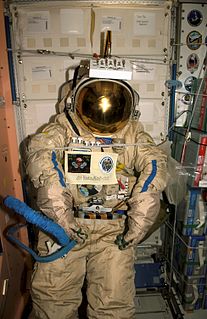
SuitSat was a retired Russian Orlan spacesuit with a radio transmitter mounted on its helmet. SuitSat-1 was deployed in an ephemeral orbit around the Earth on February 3, 2006. The idea for this novel OSCAR satellite was first formally discussed at an AMSAT symposium in October 2004, although the ARISS-Russia team is credited with coming up with the idea as a commemorative gesture for the 175th anniversary of the Moscow State Technical University.
Rincon 1 was a CubeSat built by the Student Satellite Program of the University of Arizona. The primary payload was furnished by Rincon Research, hence the name. Rincon 1 was the product of the work of about 50 students, ranging from college freshmen to Ph.D. students, over the course of several years. It was launched, after being postponed several times, on board a Dnepr on July 26, 2006, but the rocket failed and the satellite was destroyed.
A satellite campus or branch campus or regional campus is a campus of a university or college that is physically at a distance from the original university or college area. This branch campus may be located in a different city, state, or country, and is often smaller than the main campus of an institution. The separate campuses may or may not be under the same accreditation and share resources or they share administrations but maintain separate budgets, resources, and other governing bodies.
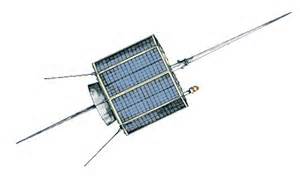
AMSAT-OSCAR 7, or AO-7, is the second Phase 2 amateur radio satellite constructed by the Radio Amateur Satellite Corporation or AMSAT. It was launched into Low Earth Orbit on November 15, 1974 and remained operational until a battery failure in 1981. Then after 21 years of apparent silence, the satellite was heard again on June 21, 2002 – 27 years after launch. At that time the public learned that the satellite had remained intermittently functional and was used surreptitiously for communication by the anticommunist opposition Fighting Solidarity during the martial law in Poland.
An amateur radio satellite is an artificial satellite built and used by amateur radio operators. It forms part of the Amateur-satellite service. These satellites use amateur radio frequency allocations to facilitate communication between amateur radio stations.

ESTCube-1 is the first Estonian satellite and first satellite in the world to attempt to use an electric solar wind sail (E-sail). It was launched on 7 May 2013 aboard Vega VV02 carrier rocket and successfully deployed into orbit. The CubeSat standard for nanosatellites was followed during the engineering of ESTCube-1, resulting in a 10×10×11.35 cm cube, with a volume of 1 liter and a mass of 1.048 kg.
OSCAR 5 is an amateur radio satellite that was launched into Low Earth Orbit on 23 January 1970 by a Thor Delta launcher from Vandenberg Air Force Base, Lompoc, California. AO-5 was launched piggyback with ITOS-1.
OSCAR III is the third amateur radio satellite launched by Project OSCAR into Low Earth Orbit. OSCAR 3 was launched March 9, 1965 by a Thor-DM21 Agena D launcher from Vandenberg Air Force Base, Lompoc, California. The satellite, weighing 16.3 kg, was launched piggyback with seven United States Air Force satellites. The satellite employed no attitude control system. OSCAR III linear transponder lasted 18 days. More than 1000 amateurs in 22 countries communicated through the linear transponder. The two beacon transmitters continued operating for several months.
OSCAR IV was the fourth amateur radio satellite launched by Project OSCAR and the first targeted for Geostationary orbit on 12 December 1965. The satellite was launched piggyback with three United States Air Force satellites on a Titan IIIC launch vehicle. Due to a booster failure, OSCAR 4 was placed in an unplanned and largely unusable Geostationary transfer orbit; however, OSCAR 4 did facilitate the first direct satellite communication between the United States and the USSR.
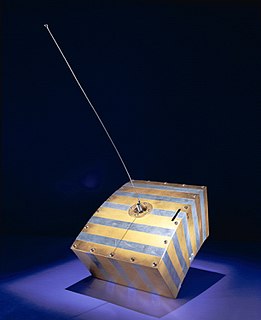
OSCAR I is the first amateur radio satellite launched by Project OSCAR into low Earth orbit. OSCAR I was launched December 12, 1961, by a Thor-DM21 Agena B launcher from Vandenberg Air Force Base, Lompoc, California. The satellite, a rectangular box weighing 10 kg., was launched as a secondary payload (ballast) for Corona 9029, also known as Discoverer 36, the eighth and final launch of a KH-3 satellite.
ParkinsonSAT, PSat or Naval Academy OSCAR 84, is a U.S. technology demonstration satellite and an amateur radio satellite for Packet Radio. It was built at the U.S. Naval Academy and was planned as a double satellite. The name ParkinsonSAT was chosen in honor of Bradford Parkinson, the father of the GPS system. After successful launch, the satellite was assigned the OSCAR number 84.
BRICSat-2, or USNAP1, is an experimental amateur radio satellite from the United States Naval Academy that was developed in collaboration with George Washington University. BRICSat-2 is the successor to BRICSat-P. AMSAT North America's OSCAR number administrator assigned number 103 to this satellite; in the amateur radio community it is therefore also called Navy-OSCAR 103, short NO-103.
PSAT-2 is an experimental amateur radio satellite from the U.S. Naval Academy, which was developed in collaboration with the Technical University of Brno in Brno, Czech Republic. AMSAT North America's OSCAR number administrator assigned number 104 to this satellite; in the amateur radio community it is therefore also called Navy-OSCAR 104, short NO-104.
OSCAR 8 is an American amateur radio satellite. It was developed and built by radio amateurs of the AMSAT and launched on March 5, 1978 as a secondary payload together with the earth observation satellite Landsat 3 from Vandenberg Air Force Base, California, United States.
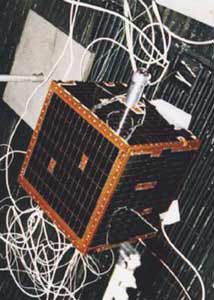
SEDSAT-1 is a U.S. amateur radio satellite built by students and developed at the University of Alabama in Huntsville (UAH).
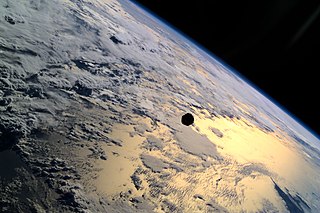
PANSAT was an amateur radio satellite. It was launched by Space Shuttle Discovery during the STS-95 mission as part of the third International Extreme Ultraviolet Hitchhiker (IEH-3) mission, on 30 October 1998 from Kennedy Space Center, Florida.
Eyesat-1 is an American experimental communications microsatellite with an store-dump payload. The mission of Eyesat-1 was experimental monitoring of mobile industrial equipment. Eyesat-1 has provided the National Oceanic and Atmospheric Administration in Silver Spring, Maryland, with communication services to the South Pole. Eyesat-1 carries an FM repeater for Amateur Radio Research and Development Corporation (AMRAD) called AMRAD OSCAR 27 or OSCAR 27.

SAPPHIRE was a satellite built by the Stanford University students in Palo Alto, California.

Starshine 3 is one of five satellites in the Starshine project.
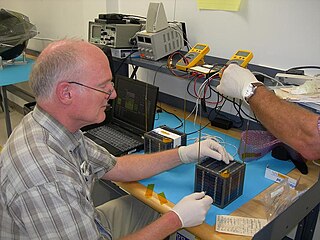
Radar Fence Transponder was an amateur radio satellite that was developed and built for training purposes at the United States Naval Academy. The 3 kg (6.6 lb) heavy RAFT had a cubic structure of 12.7 cm (5.0 in) edge length and therefore did not meet the Cubesat standard. Solar cells on all six sides of the satellite were used to supply energy. It had neither position control nor drive systems.
| This spacecraft or satellite related article is a stub. You can help Wikipedia by expanding it. |